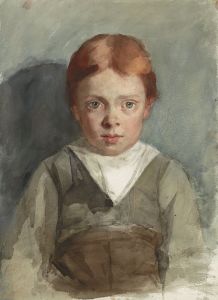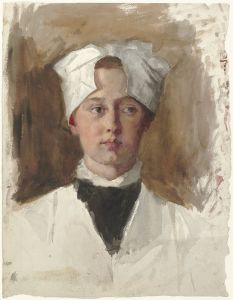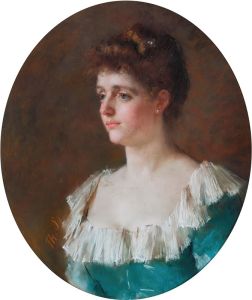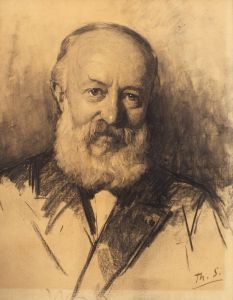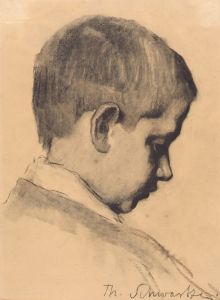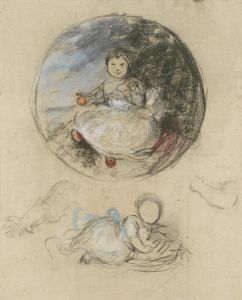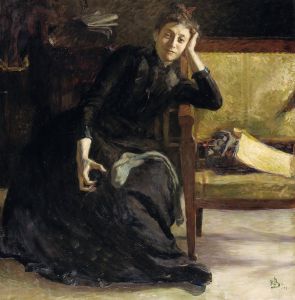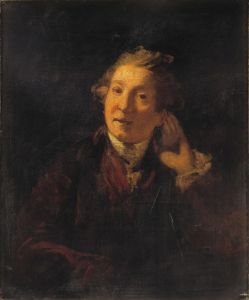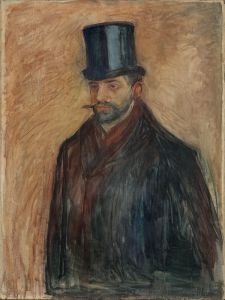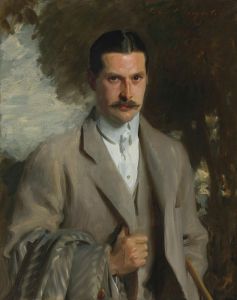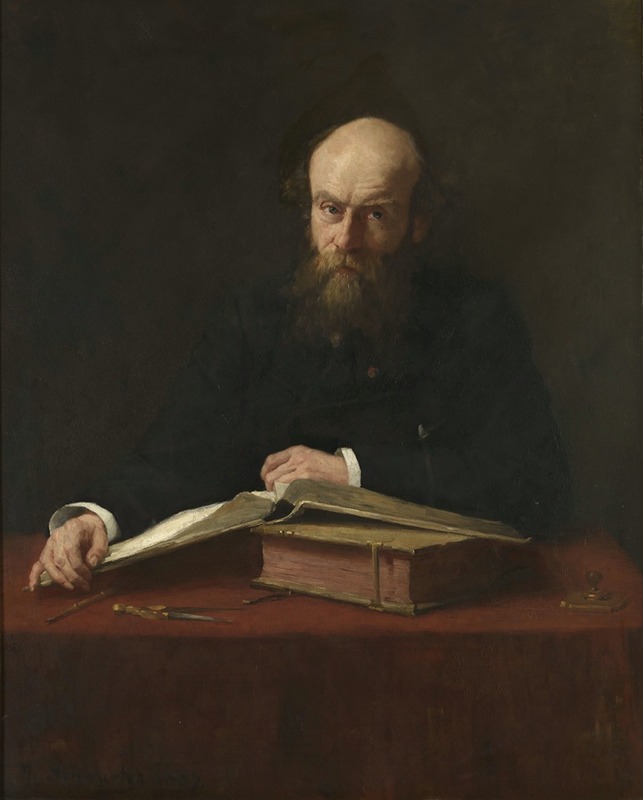
Portret van Dr. P.J.H. Cuypers
A hand-painted replica of Thérèse Schwartze’s masterpiece Portret van Dr. P.J.H. Cuypers, meticulously crafted by professional artists to capture the true essence of the original. Each piece is created with museum-quality canvas and rare mineral pigments, carefully painted by experienced artists with delicate brushstrokes and rich, layered colors to perfectly recreate the texture of the original artwork. Unlike machine-printed reproductions, this hand-painted version brings the painting to life, infused with the artist’s emotions and skill in every stroke. Whether for personal collection or home decoration, it instantly elevates the artistic atmosphere of any space.
"Portret van Dr. P.J.H. Cuypers" is a portrait painting by the Dutch artist Thérèse Schwartze. The painting depicts Dr. Pierre Cuypers, a prominent Dutch architect known for his significant contributions to the design of many notable buildings in the Netherlands, including the Rijksmuseum and the Amsterdam Central Station. Thérèse Schwartze, an acclaimed portrait artist of the late 19th and early 20th centuries, was renowned for her ability to capture the character and essence of her subjects with remarkable detail and realism.
Thérèse Schwartze was born on December 20, 1851, in Amsterdam, into a family with a strong artistic background. Her father, Johan Georg Schwartze, was a painter, and he provided her with her initial training in art. She later studied under Gabriel Max in Munich and further honed her skills in Paris. Schwartze became one of the most sought-after portrait painters in the Netherlands, receiving numerous commissions from the Dutch royal family and other prominent figures of the time.
Dr. Pierre Cuypers, born on May 16, 1827, in Roermond, was a leading figure in the Gothic Revival architectural movement in the Netherlands. His work was characterized by its intricate detailing and adherence to Gothic architectural principles. Cuypers' designs played a crucial role in shaping the architectural landscape of the Netherlands during the 19th century. His most famous works, the Rijksmuseum and the Amsterdam Central Station, remain iconic landmarks in Amsterdam.
The portrait of Dr. P.J.H. Cuypers by Thérèse Schwartze is a testament to her skill in capturing the likeness and personality of her subjects. In the painting, Cuypers is depicted in a dignified pose, reflecting his status and achievements. Schwartze's use of light and shadow, as well as her attention to detail, brings a sense of realism and depth to the portrait. The painting not only serves as a representation of Cuypers' physical appearance but also conveys a sense of his character and the respect he commanded in his field.
Schwartze's ability to portray her subjects with such precision and sensitivity earned her widespread acclaim during her lifetime. She was awarded numerous honors, including being made a member of the Royal Academy of Art in Amsterdam and receiving the Order of Orange-Nassau. Her works are held in high regard and are part of various prestigious collections, including the Rijksmuseum in Amsterdam.
The "Portret van Dr. P.J.H. Cuypers" is an important piece within Schwartze's body of work, highlighting her talent as a portrait artist and her contribution to documenting the notable figures of her time. The painting remains a valuable historical artifact, offering insight into the lives and appearances of influential individuals in Dutch history.






